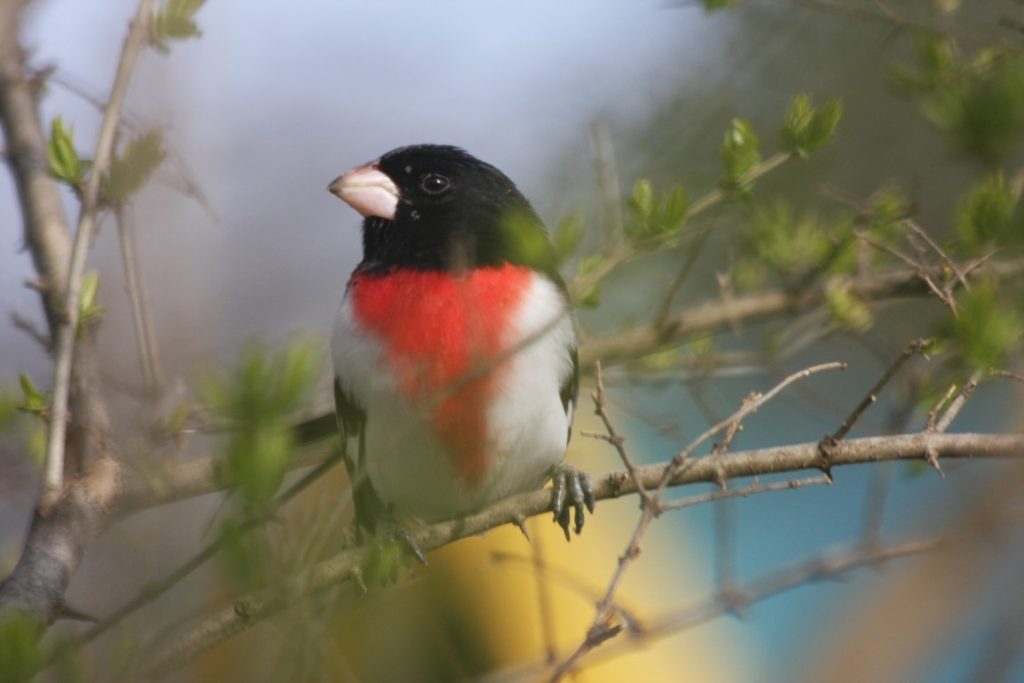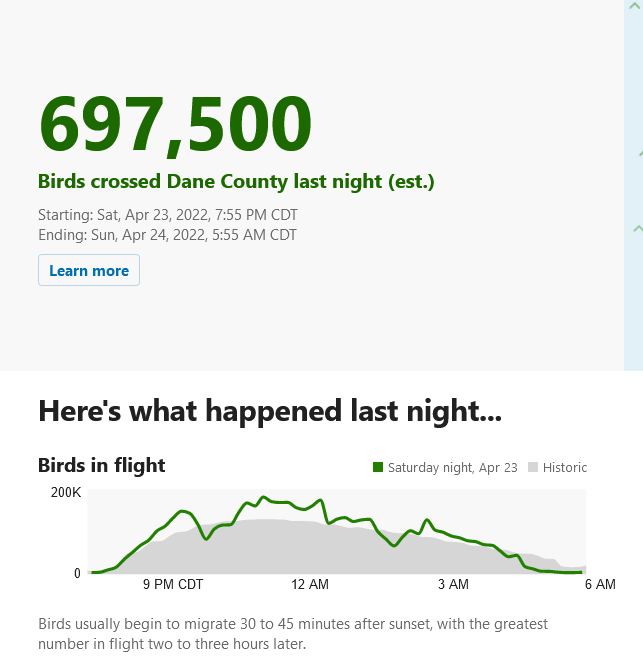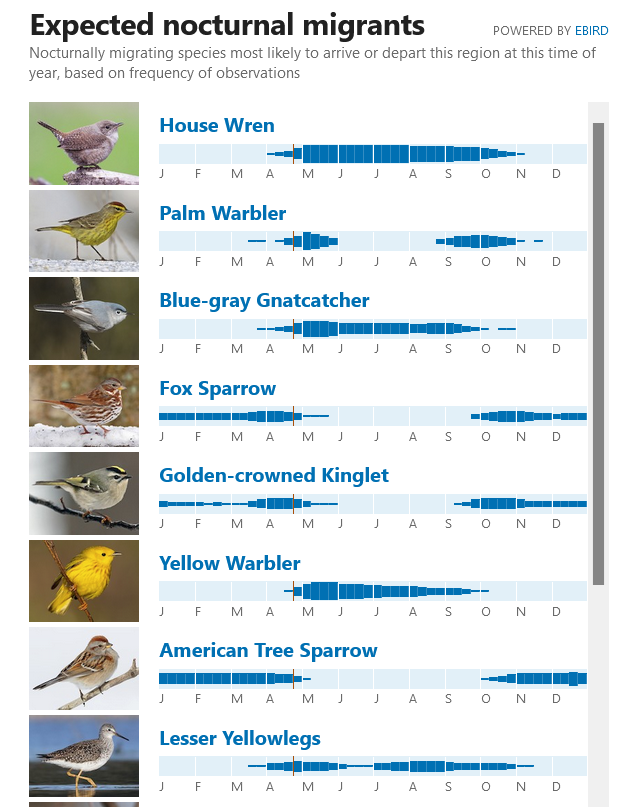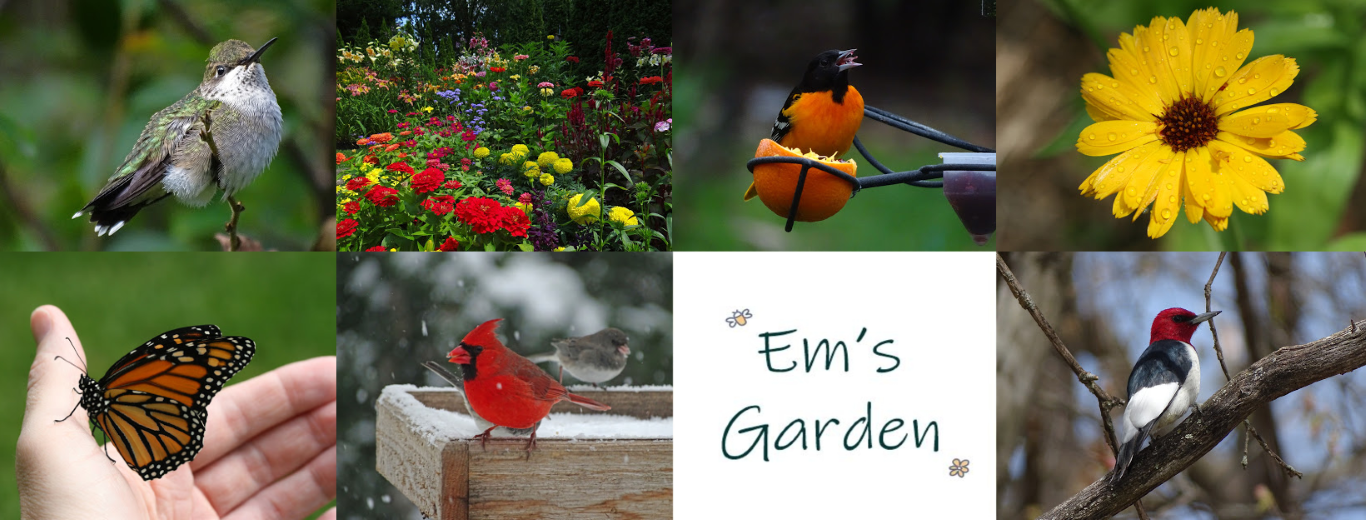
A Rose-breasted Grosbeak showed up in our yard over the weekend and it was one of the earliest spring sightings I’ve ever had. I was surprised since this has been one of the slowest springs I can remember. Last year at this time my tulips and daffodils were finishing up. This year the bulbs that usually bloom in March are finally strutting their stuff and my tulips aren’t even showing their buds yet.

I continue to see juncos visiting my feeders, and it’s late for them to still be hanging around, but I’m sure they’ll be gone soon. In fact, if you’re in the contiguous United States, you can now find out approximately how many birds migrated over your location on any given night with the Cornell Lab of Ornithology’s new BirdCast Migration Dashboard.
Here’s a snapshot from a few nights ago for my county. When I looked at the data in the early evening, the number was about 30,000 birds. The next morning the tally for all of the overnight hours was almost 700,000! How do they not all smack into each other up there in the dark?

Live data feed starts at dusk each evening. They share, “Nocturnally migrating birds often begin their migration approximately 30-45 minutes after local sunset, with the highest numbers of birds in flight generally occurring in the first half of the night (e.g. usually 2-4 hours after sunset)…The BirdCast Migration Dashboard data feed is live from March 1 to June 15 in spring and August 1 to November 15 in fall. Live data feed begins each night at sunset and ends each morning at sunrise during migration season.”
The dashboard even gives you a local list of “Nocturnally migrating species most likely to arrive or depart this region at this time of year, based on frequency of observations” so you know what birds to keep an eye out for when you’re out and about!

Check this great new tool and learn what’s happening in the skies above your residence!
